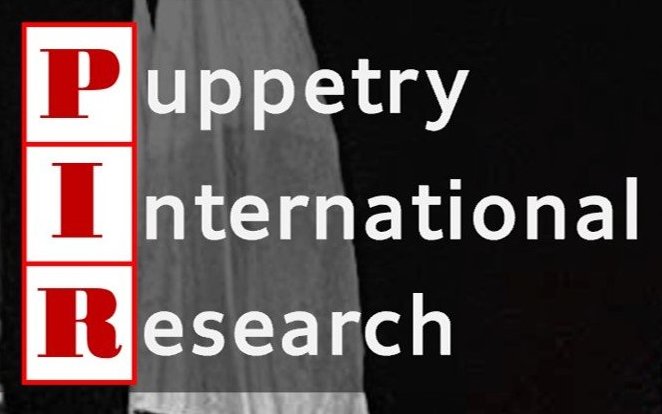PUPPETRY & DANCE
FALL/WINTER 2005 ISSUE NO. 18
Table of Contents • Editor's Note • Selections
THE (UNUSUAL) WORD MADE FLESH
by Christopher Williams
Ever since the theme of this issue got out, people have been giving us excited reviews of the work of young choreographer Christopher Williams. Dance critics seem to agree. In The New Yorker (2005/08/08 and 15), Joan Acocella, describing his Ursula and the 11,000 Virgins, placed him among the best of the new wave of surrealist choreographers (a group whose imagery is more ambiguous than the earlier wave that included Martha Clarke and Pina Bausch).
Williams brings to his work not only his background as a dancer (he has worked for Tere O'Connor and others), but as a puppeteer. It was not surprising to learn that one of his mentors at college was dancer/puppeteer Dan Hurlin. He has also worked for Basil Twist.
In a recent conversation with Christopher Williams, I asked him about his reasons for using puppets in his dances, as well as what he thought were puppets' strengths relative to flesh-and-blood dancers, and how he saw the relationship of the puppet to its animator.
In the context of making dances, I see puppets both as unique entities of their own and more often as possible extensions of the human dancers' bodies. While both dancers and puppets have certain limitations in their range of movement, puppets, in many forms, arguably surpass the human anatomy in their ability to appear to defy gravity, to change scale, and to undergo metamorphosis before the eyes of the viewer, for example. To watch a dancer perform a solo with a bird puppet hovering around her may give a scene a more heightened sense of movement than if she were dancing alone. The bird puppet, while maintaining its unique identity, has also served to augment the movements of the dancer's body and provide her with a charged, dramatic space or context. This occurrence of the puppet providing the dancer with a heightened dramatic playing space can also work in reverse. In Virgo Genitrix, for example, it was the dancers' bodies (with the addition of prosthetic pregnant bellies) that provided a kind of human, fleshy proscenium stage for two baby puppets representing Saint John the Baptist and the Christ Child leaping in the wombs of their mothers.
In Basil Twist's version of the Ballet Petrushka, he employed figurative puppet dancers instead of humans for the three main characters with great success. My experience with them was that they could perform many high, gravity-defying leaps and other steps especially with ease, while turns or spins and other non-frontal steps proved a bit more difficult (though not impossible) due to the fact that they were manipulated from behind by hidden puppeteers. I have not yet explored the possibility of presenting a figurative dancing puppet against a human dancer, with the possible exception of a scene from Virgo Genitrix in which one of the dancers is visited by a fairy-like archangel Gabriel apparition. The ensuing duet exploited the strength of the puppet to hover or fly above her companion, while the dancer could spin and turn easily on the floor below hers. Puppets can be built specifically to accomplish one certain effect, while human dancers constantly strive to push the boundaries of their ultimately finite movement vocabularies. This is why, as a choreographer working from a base of innate love of the living human body in motion, I more often than not see puppetry as a sensitive way to allow a dancer to appear to breach the boundary of his own physical limitations.
The role of puppet to its manipulator depends greatly upon the approach I am exploring within a particular work. I try to make nothing arbitrary in this choice. I employ additional puppeteers (or not) in my dances in order to most thoroughly flesh out a particular idea or vision of mine.
In the case of Mandragora Vulgaris, the mandrake root baby puppets are meant to seem as if they had grown out of the tangled root garments that the dancers wear. Here, I specifically wanted to explore the possibilities of the dancers
themselves fulfilling the role of puppeteer. As a result, the role of puppeteer to puppet became a metaphor for the mother to her spawn through parthenogenesis or some other mysterious and spontaneous form of reproduction. In this way, the wild woman or Amazon mother to baby relationship justifies the need for puppets.
In the case of Virgo Genitrix, however, in keeping with apocryphal legends of the medieval cult of the three Marys, I was interested in maintaining the strict illusion that the puppets were separate, supernatural entities visiting or plaguing the dancers. Six veiled puppeteers and light curtain techniques were employed to maintain this effect.
The kind of puppet I choose to employ also has a great significance for me in each work. In Ursula and the 11,000 Virgins, the choice to include a lamb marionette in the solo of Saint Agnes was intended to create a poetic harmony with her early iconography, with her name's sake, as well as with that of the marionette itself, whose name comes from its iconographic use to depict the virgin Mary in early Christian mystery plays.
For me, a certain beauty lies in the flexibility of the roles of puppets to their manipulators as well as the multiplicity of puppet forms, and I plan to continue to challenge this relationship as I create more work.
Describing Ursula and the 11,000 Virgins, Acocella also praises the costumes and the music, but her final words are reserved for the choreographer:
P.S. 122 should be congratulated for producing this show, but " Ursula" deserves to be shown in a larger theatre, or just a theatre with more seats. The four performances were completely sold out, with people on the sidewalk, crying for tickets.
For images and information, visit Christopher Williams's eb site: www.threehandstar.org



